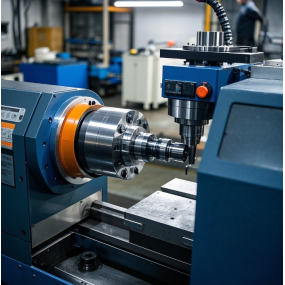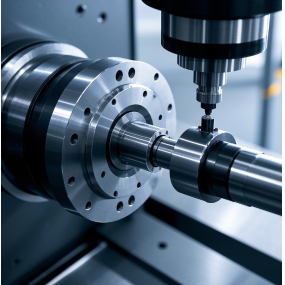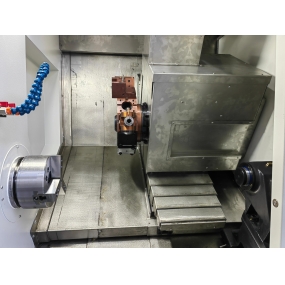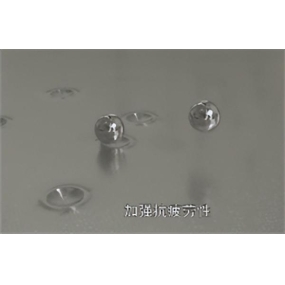When a crack is encountered during cabinet Sheet Metal Processing, the following steps can be taken to solve it: Locate the crack: · Experienced operators are required to accurately locate the location of the crack and determine the area that needs to be repaired.  Clean the crack: · Once the crack location is found, use a cleaner and detergent to thoroughly clean the surface of the crack, ensuring that all dirt and oil stains are removed. · Use a high-quality cleaner, starting from the crack and covering the entire damaged area to ensure the effect of the next step to restore the activity. Preventive measures: · When performing sheet metal processing, in order to prevent cracks from occurring, appropriate materials should be selected, such as stainless steel, aluminum alloy, etc. · In the process design, if you encounter materials that are prone to cracks, such as aluminum and thicker carbon steel, the bending direction should be designed to be perpendicular to the material texture. · If there is bending in both the X and Y directions, consider rotating the material to 45 degrees. · Such problems can also be dealt with by increasing the bending arc method. Filling cracks: · Filling is one of the key steps to restore long-term strength. · Mixing and coating the filler on the damaged surface to fill in the empty space. · After filling, you can use the grinding equipment to polish to ensure that the surface is flat. · If necessary, this process can be repeated on the filler until all the holes in the damaged area are filled. Surface treatment: · After the crack is repaired, the surface of the sheet metal parts is painted. · Coating can protect sheet metal parts from harsh environments such as dirt and water. · In order to obtain a good coating effect, professional quality coating equipment should be selected. Strengthen quality inspection: · Strengthen quality inspection work before, during and after processing. Ultrasonic flaw detection, X-ray inspection and other means can be used to find existing problems and deal with them in a timely manner.
Clean the crack: · Once the crack location is found, use a cleaner and detergent to thoroughly clean the surface of the crack, ensuring that all dirt and oil stains are removed. · Use a high-quality cleaner, starting from the crack and covering the entire damaged area to ensure the effect of the next step to restore the activity. Preventive measures: · When performing sheet metal processing, in order to prevent cracks from occurring, appropriate materials should be selected, such as stainless steel, aluminum alloy, etc. · In the process design, if you encounter materials that are prone to cracks, such as aluminum and thicker carbon steel, the bending direction should be designed to be perpendicular to the material texture. · If there is bending in both the X and Y directions, consider rotating the material to 45 degrees. · Such problems can also be dealt with by increasing the bending arc method. Filling cracks: · Filling is one of the key steps to restore long-term strength. · Mixing and coating the filler on the damaged surface to fill in the empty space. · After filling, you can use the grinding equipment to polish to ensure that the surface is flat. · If necessary, this process can be repeated on the filler until all the holes in the damaged area are filled. Surface treatment: · After the crack is repaired, the surface of the sheet metal parts is painted. · Coating can protect sheet metal parts from harsh environments such as dirt and water. · In order to obtain a good coating effect, professional quality coating equipment should be selected. Strengthen quality inspection: · Strengthen quality inspection work before, during and after processing. Ultrasonic flaw detection, X-ray inspection and other means can be used to find existing problems and deal with them in a timely manner.
Hello! Welcome to EMAR's website!
 English
English » »
» »
 Spanish
Spanish Arabic
Arabic Spanish Basque
Spanish Basque Portuguese
Portuguese Belarusian
Belarusian Japanese
Japanese Russian
Russian Icelandic
Icelandic Bulgarian
Bulgarian Azerbaijani
Azerbaijani Estonian
Estonian Irish
Irish Polish
Polish Persian
Persian Boolean
Boolean Danish
Danish German
German French
French Filipino
Filipino Finnish
Finnish Korean
Korean Dutch
Dutch Galician
Galician Catalan
Catalan Czech
Czech Croatian
Croatian Latin
Latin Latvian
Latvian Romanian
Romanian Maltese
Maltese Malay
Malay Macedonian
Macedonian Norwegian
Norwegian Swedish
Swedish Serbian
Serbian Slovak
Slovak Slovenian
Slovenian Swahili
Swahili Thai
Thai Turkish
Turkish Welsh
Welsh Urdu
Urdu Ukrainian
Ukrainian Greek
Greek Hungarian
Hungarian Italian
Italian Yiddish
Yiddish Indonesian
Indonesian Vietnamese
Vietnamese 简体中文
简体中文 Haitian Creole
Haitian Creole








